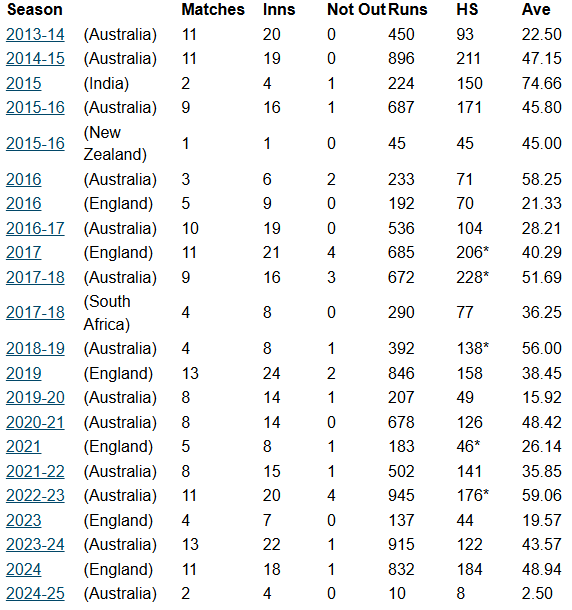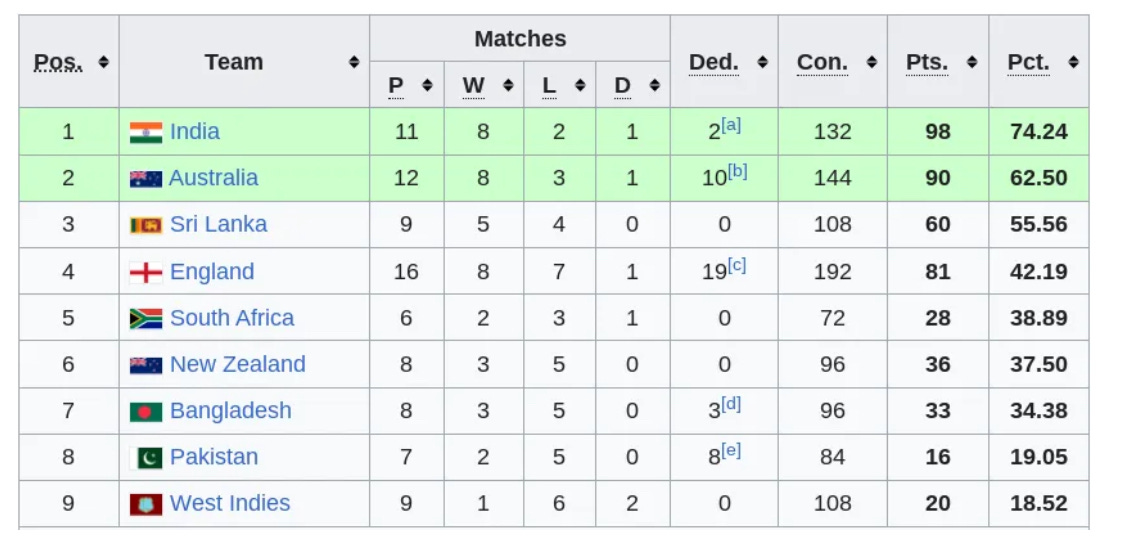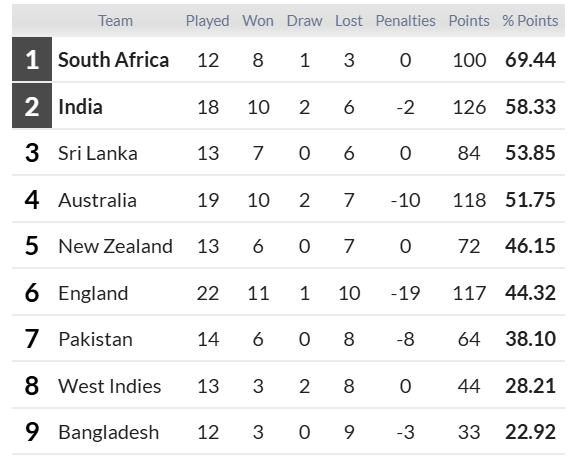Ball 1
’Selection nightmare: Contenders crumble in bat-off disaster’.
That was the Adelaide Advertiser’s headline at the end of day 1 of the tour match, with Australia A 4/99, in reply to India A’s 107 all out.
Other media outlets expressed similar sentiments: that Sam Konstas, Nathan McSweeney, Marcus Harris and Cameron Bancroft are in a bat-off, and three of them squandered their opportunity:
Konstas 0
Bancroft 0
Harris 17
McSweeney 29* (from 110 balls!)
So what?
I find it curious that with so much data available, cricket selections often seem to come down to just one match.
Batting is a weird pursuit. One mistake and you can be removed from the game and not get another chance for days or even weeks. Imagine serving a fault to start a tennis match and being forced to walk off the court, racket under your arm!
Bancroft making one duck should not harm his chances. What should harm his chances is that after 293 innings in first class cricket he averages just 39, at a strike rate of 43. This output suggests Bancroft is unlikely to dominate at Test level . . . so does his Test average of 26.
Ah, but he’s better than that, I hear you say - he’s been superb in the last couple of years. Has he though? Here is his entire first class record:
I don’t see the massive improvement others talk of. His recent form has been decent, sure, but it doesn’t look to me like he has made a quantum leap.
To clarify, I think Bancroft is a good player. I don’t think he (or Harris) would be a terrible selection - plenty of worse players have been picked in the past. But if up to me, I would probably be looking elsewhere.
Ball 2
What about McSweeney then? At least he is not out!
I hope he goes on to make a hundred tomorrow. But even if he does, I am not convinced about him either . . . not yet anyhow.
In 2022 I was commentating on a Marsh Cup game at North Sydney Oval and McSweeney made 90-odd and looked very impressive. There was a general feeling in the ground that we were seeing someone with a big future. And maybe we were. I am totally open to the possibility that he could become a successful Test player. He’s only 25, he looks good, he’s scoring runs.
But it has to be said, his record to date is okay rather than amazing. From 63 first class innings he has an average of 37 at a strike rate of 42. Again, if people say that record is not reflective of his true ability - well, last season he had 25 innings, for an average of . . . 37.
On ABC television’s Offsiders, Aussie coach Andrew McDonald lauded McSweeney’s leadership qualities, adding, ‘. . . and it feels as though now the batting is matching the leadership capabilities . . .’
I find this a bit baffling. No doubt McSweeney does indeed have leadership skills - he might well be a fine cook and clarinet player too - but batting, above all else, requires supreme hand-eye coordination.
Do not construe this as me writing McSweeney off. I am not. He did look awfully good that day at North Sydney and if he starts to consistently average 50-plus I will become one of his biggest fans. But as for leadership skills? Bob Hawke was a great leader but no-one wanted him to open the batting.
Ball 3
A mere three weeks ago, this is how the World Test Championship (WTC) table stood:
India looked certainties for the final, with Sri Lanka and England in the running to knock Australia out of the other top-two spot.
Things have changed a bit since then! England lost the final two Tests against Pakistan and India, stunningly, lost their first two Tests against New Zealand.
Here is how the table now looks:
Unfortunately, given sides play different numbers of matches, the percentage column is unavoidable, but the result is a table that I find it difficult to get a feel for.
So I found an online predictor and added guestimates for future results, confidently expecting Australia to make the final. I was in for a shock!
South Africa! I did not expect them to figure in the finish but maybe they will. Click on the link and try for yourself - it is quite fun. Do let me know how your table looks!
Ball 4
The Australian men’s team is about to play three home ODIs against Pakistan and then three T20Is. The Aussie squads for both series have been announced: no Test players are in the T20 squad and Andrew McDonald is resting from that series; Andre Borovec will be the coach.
From a cricketing perspective, this is fine and indeed sensible, in view of how soon afterwards the Test series against India begins.
But from a cricket marketing perspective, it is yet another disappointment. Yes, the India series will be huge, but the men’s home summer needs to be about more than just the Tests. Back in 2009, when David Warner burst into the Aussie side, a T20 international was enormous. The MCG was packed, the Channel Nine ratings were massive - it was the big time.
Sure, T20 was still a novelty back then but even so, I think Cricket Australia should reflect on how far they have let the international version drop. It is hard to expect an average sports fan to get excited about a paywalled series in which the best players and even the coach aren’t turning up for.
They haven’t even dropped the entry prices. Tickets for the Sydney game are $120, $95, $70 and $50. It is true that there is one other cheaper category of ticket (probably $30), which has sold out. But they always do this - have a tiny allocation of cheaper tickets just so they can say, ‘Tickets start from $30!’
Ball 5
New Zealand’s incredible win against India brought to an end an unprecedented period of home Test match dominance by India
Following their 2-1 loss to England in 2012/13, India had won every home series until the New Zealand loss. Let me stress: they were not merely unbeaten, they won every series. In fact, they only actually lost four individual Test matches during the run.
India also had more away success in this period than they had ever done, which leads to the question - how good was this side, when compared to the greatest teams ever?
I’ve always maintained that the best three Test sides of all time were the Aussies of 1948, the West Indies of the 80s and the Aussies of the late 90s-early 2000s.
So to keep it recent, let’s compare an indicative Test eleven of the Indian side with the Waugh/Ponting Aussie one and assume they were to play at a neutral venue like Lord’s.
I was about to select my players but, to avoid accusations of bias I decided to let AI do it, by asking it to provide me with an indicative side from each era:
India (of the last decade)
Rohit Sharma
KL Rahul
Cheteshwar Pujara
Virat Kohli
Ajinkya Rahane
Rishabh Pant (wk)
Ravindra Jadeja
Ravichandran Ashwin
Mohammed Shami
Ishant Sharma
Jasprit Bumrah
Australia of the late 90s and early/mid 2000s
Matthew Hayden
Justin Langer
Ricky Ponting
Mark Waugh
Steve Waugh (c)
Damien Martyn
Adam Gilchrist (wk)
Shane Warne
Brett Lee
Jason Gillespie
Glenn McGrath
Not necessarily the sides I would have picked but not too bad. Interesting that it appointed Steve Waugh as Aussie captain but refrained from choosing an Indian captain!
Going through them, I think that the Aussies have the edge in most of the head-to-head batting lineups, with the obvious exception of Mark Waugh versus Kohli. As for bowling - McGrath and Bumrah are in a different league to the rest, but I think I’d favour Gillespie and Lee over Shami and Ishant Sharma. And Warne was obviously a champion, although Ashwin and Jadeja combined are pretty impressive too.
All in all, I think it is uncontroversial to assert the Aussies would win. So I don’t think this Indian side threatens my bracket of the three greats - but it is a compliment to them that they even got me asking the question!
Ball 6
Steve Smith’s Test batting average peaked at 64.8 in 2019, when he was 30. It has now dropped to 57.0 - obviously still superb. He remains at the forefront of the conversation when it comes to naming Australia’s second best ever batsman.
He is now 35 and 5 months and there is a feeling that in the last couple of years his phenomenal powers have begun to wane.
By way of comparison, here is how some other generational stars of Aussie batting fared after this age:
Greg Chappell actually retired at almost precisely the age Smith is now. I remember him in commentary once saying that 28-32 is the peak period for a batter and I think at 35 he could sense his reflexes and eyesight were just starting to decline.
Ponting is the one who famously fell away the most - which is a pity. He had a Test average of 60-odd after 100 Tests and I think he was a better player than his final average of 52 indicates. Border struggled near the end and even though Waugh’s numbers remained remarkably solid he too had that well documented lean spell prior to his famous SCG hundred in 2003.
I fear that we won’t see the imperious 2019-era Smith again but I live in hope. For me, how Smith performs will be one of the most interesting features of the summer - and I will be cheering him on.









